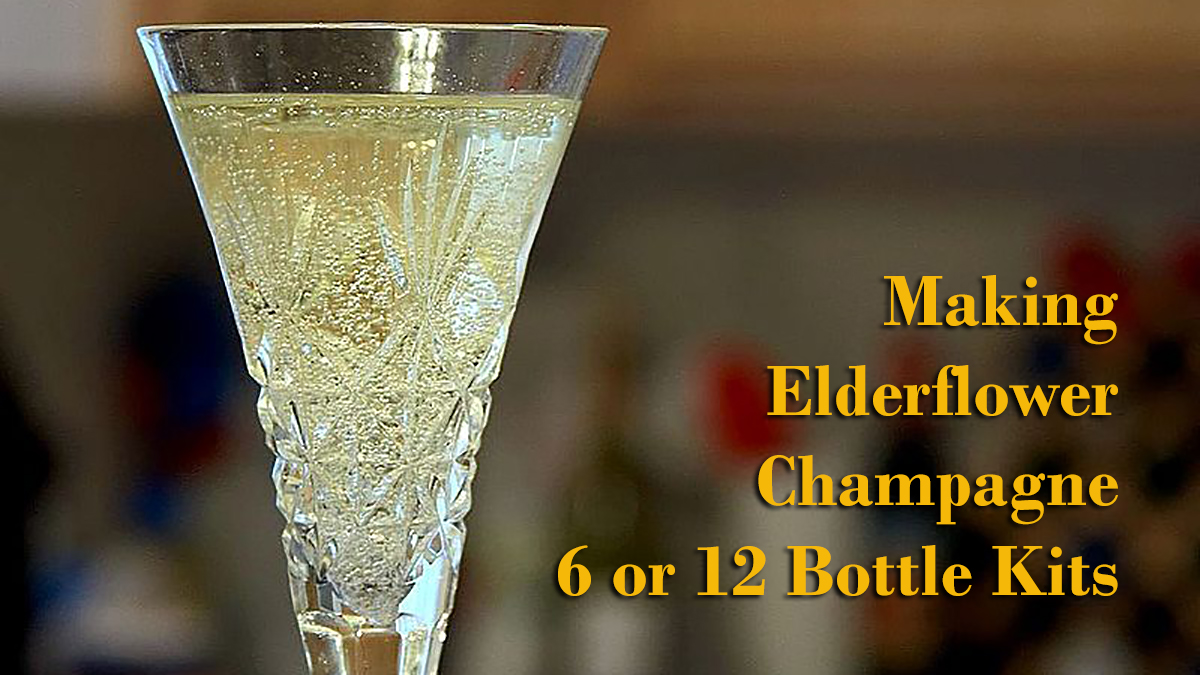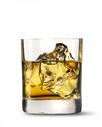
Recommended Equipment
| Makes 4.5 litre (one gallon) |
Makes 10 litres (2.2 gallons) |
| 10 litre plastic bucket with lid |
10 litre plastic bucket with lid |
| 5 litre plastic (or 5 litre Glass Demi John) |
10 litre plastic bucket and lid drilled |
| Bung and Airlock for container |
Bung and Airlock for container |
| Small Fine Nylon straining bag |
Small Fine Nylon Straining Bag |
| Siphon and U Tube |
Siphon and U Tube |
| Hydrometer with trail case |
Hydrometer with trial case |
| Thermometer |
Thermometer |
| Funnel |
Funnel |
| Steriliser |
Steriliser |
| One Litre plastic food grade jug |
One Litre Plastic food grade jug |
| 5 x 1Litre Plastic PET Bottles |
10 x 1 Litre Plastic PET Bottles |
Ingredients for both sizes
Citric Acid
Camden Tablets
Country Wine Yeast
1.5 kilo of sugar (3 kilo for 12 bottle).
Yeast Nutrient
Tannin
Finings
Potassium Sorbate
400gm White Grape Juice Concentrate
For 10 litres just double up the volumes.
The Elderflowers can be very sensitive, so we would recommend only picking on warm days. You want the flowers to look good and not be damaged. Take a one Litre jug and you need to fill it about half full of flowers which have been cut off the stem. At this point feel free to add anything that you might think might enhance the wine and give it more flavour. The sort of things is Bananas Raisins Sultans Cranberries Blueberries. If they are hard adding at the time of boiling water if soft they can go in now.
Making Instructions (Recipe)
Make sure all the equipment that comes into contact with the wine is Sterilised before starting.
Put the Elderflowers, half the Sugar(750gms) and White Grape Concentrate into a plastic (food grade) and add 3 litres of boiling water into the 10 litre plastic bucket. Add more cold water up to 4 litres in total. Allow to cool. When the temperature has dropped to between 20 and 25C add a teaspoon of Tannin, a tablespoon of Citric Acid, the Yeast Nutrient and the Yeast. Give a good stir. Cover loosely with the lid and leave to ferment for 3 days (temperature between 20-25C).
Pour the juice through the straining bag into the Demi John (or second bucket) and then dissolve the remaining Sugar (750gms) in 400mls of boiling water. Allow this to cool below 25C and add to the Demi John. Fit the airlock half filled with clean water. Leave to ferment and when the frothing dies down top up with water (20C) to just below the neck of the Demi John (10 litre on the bucket). Refit the bung and airlock (half filled with clean water). Leave at 20-25C to ferment.
Leave until fermentation is complete (the time it takes will depend on the temperature). This will normally be when the airlock has stopped bubbling but always use your hydrometer to make sure. It’s should be around 1.000 or less on the scale and will show the same reading for a few days.
FOR ELDERFLOWER WINE (NOT SPARKLING). Siphon the wine off the sediment back into the sterilised bucket leaving the sediment behind. Clean out the Demi John and then pour the wine back into it from the bucket. Add a Campden Tablet (one per 5 litres) and a teaspoon of Potassium Sorbate. Stir or shake well. We need to get rid of the carbon dioxide in the wine before adding the Finings. Once done add the Finings. Leave in a cool place to clear. When clear you can then bottle your wine. See our guide on bottling.
FOR ELDERFLOWER CHAMPAGNE. If you want sparkling wine do not add the Campden or Potassium Sorbate but degas and add the Finings. Now here comes the clever bit. The yeast has done its work and converted all the sugar to alcohol. We are now going to put the wine into bottles. These need to be designed to hold pressure. Any bottle that has had a fully carbonated fizzy drink is good or champagne or beer bottles. Simply siphon the wine into the bottles to within 25mls of the top. Now we are going to add a teaspoon of sugar to each bottle. This will wake up the yeast and it will start the fermentation off again. This gives the wine the necessary gas to be carbonated. Screw the caps on and leave the bottles in a warm place for 5 days to get this process working. Once done we can transfer the bottles to a cool place to clear. If you find the PET bottles start to lose their shape with all the pressure just slightly release the pressure by unscrewing the cap a little. When pouring we need to be careful not to disturb the sediment in the bottom of the bottle. Once the pouring process is started then don’t stop. Easiest if you go into a jug first.
Elderflower Champagne Wine is quite a dry drink, so we would not recommend adding any extra sugar but that decision is yours. It’s a great taste for a sparkling wine.
Elderflower wine blends really well with other white wines and again is best drunk as a dry wine.
General Guidelines for Fruit Wines
Always try to make sure the fruit is clean and bug free
Make sure all the equipment that comes into contact with the wine at any stage of the process is clean and sterilised.
Use a hydrometer and thermometer at all times Check out the Guides on the web site.
Make sure when shaking a Demi John made of glass that you always release the pressure between shaking. Glass Demi Johns can build up a lot of pressure and can crack or split if this is not done.


 Wine
Wine  Beer / Ale
Beer / Ale  Cider
Cider  Spirits & Liqueurs
Spirits & Liqueurs